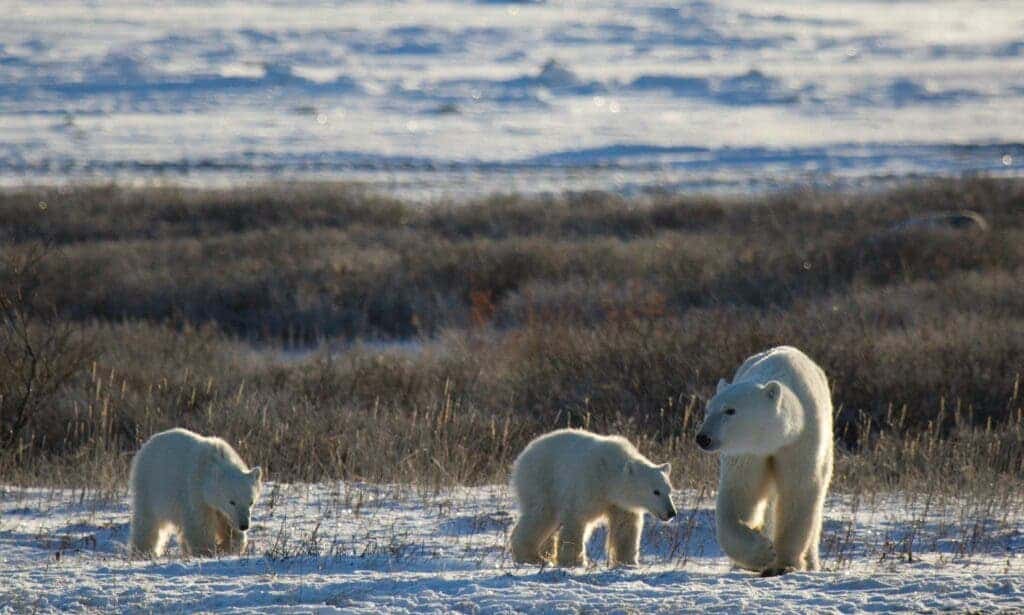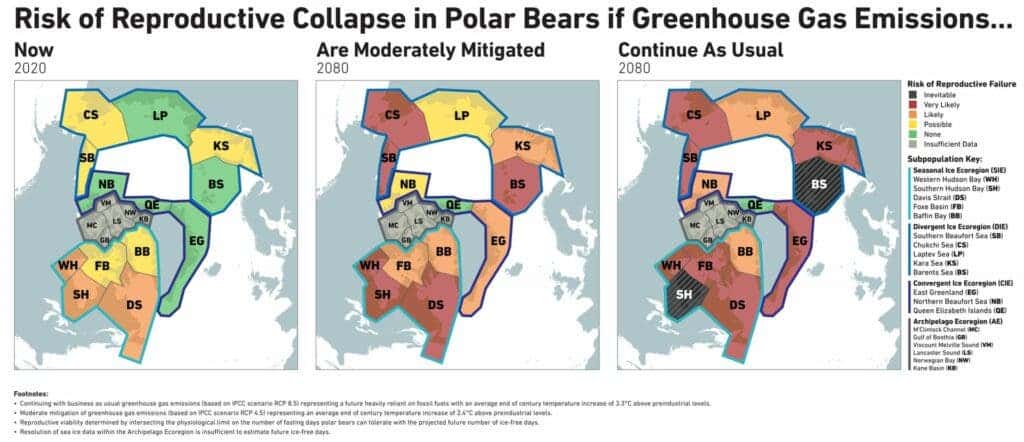If humans don’t greatly reduce their greenhouse gas emissions in the following years, most of the populations of polar bears will struggle to survive beyond 2100, according to a new study.
Some populations are already close to their survival limits as the Arctic sea continues to shrink.

Images of polar bears desperately looking for food have become the poster child for the effects of climate change — and for good reasons. Polar bears are the largest terrestrial carnivores on Earth, and they’re in major climatic trouble. The fate of polar bears is tightly linked to what happens on the Arctic’s sea ice — particularly to Arctic ice. Bears rely on it as a platform to catch seals, their prey of choice.
The new study, carried out by an international group of researchers, marks the first-time scientists have been able to predict when, where, and how polar bears are likely to disappear. Previous models didn’t account for the different Arctic living conditions and levels of sea ice subpopulations encounter.
The researchers looked at 13 of the world’s 19 polar bear subpopulations, which account for 80% of the total population of the species. The bears that live an area known as the Archipelago ecoregion in the Canadian Arctic were not included as the geography of the area made it too difficult to predict its future ice extent.

To predict what’s in store for polar bears, the study used two different greenhouse gas emissions scenarios. Under a moderate emissions scenario, polar bears in Russia and Alaska would face “possible” reproductive collapse by 2080. With a very high emissions scenario, polar bears in Canada’s Queen Elizabeth Island would be the only ones that would be able to survive. No matter how you look at it, if we don’t decrease our emissions substantially, polar bears are in big trouble.
The researchers also found that the length of time a bear can survive without food depends on the region and the condition of the bear, with cubs being the first to be impacted by extended fasting periods. The second-most vulnerable are adult females, followed by adult males and solitary females — which can fast for up to 255 days.
“What we’ve shown is that, first, we’ll lose the survival of cubs, so cubs will be born but the females won’t have enough body fat to produce milk to bring them along through the ice-free season,” said Dr. Steven Amstrup, chief scientist of Polar Bears International, who was also involved in the study.
Polar bears rely on energy reserves they accumulated during the winder hunting season to make it through the summer months. Despite they used to fast for months, their body condition, reproductive capacity and survival will eventually diminish if they are forced to go too long without food.
Unlike other species threatened by hunting or deforestation, polar bears can only be saved if their habitat is protected. Other creatures might have a chance of relocating in colder places, but polar bears have nowhere to go.
At any rate, saving polar bears won’t be easy. Previous research has shown that even if emissions are steeply reduced now, it will still take another 25 to 30 years for sea ice extent to stabilize.
The study was published in the journal Nature.
Was this helpful?



